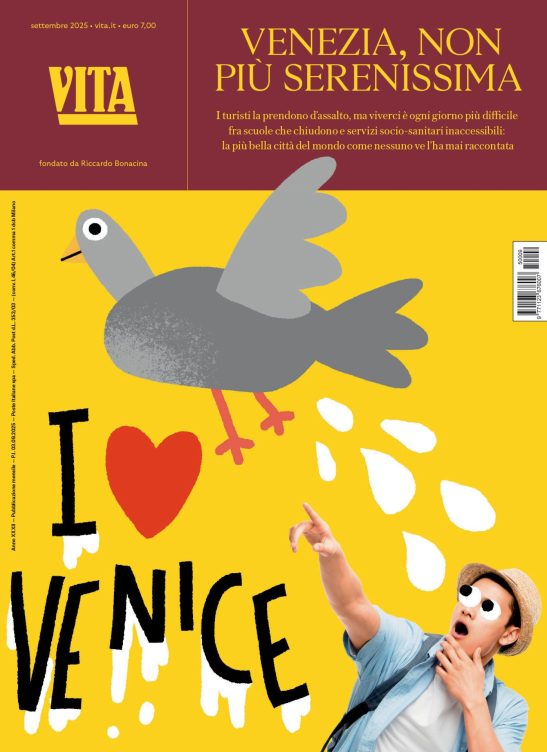Non profit
The female face of poverty: will we ever learn?
ActionAid has called for a unilateral addressing of the female face of poverty by leaders at the up-coming G8 summit this July in a specially produced report. A necessary move, or an unimaginative repetition of well-known facts?
di Rose Hackman

Will we ever learn?
Fighting for Women’s Rights often seems so passé. Surely we’ve done that, surely we have other more important fish to fry now. Climate change, the financial crisis, an HIV/AIDS epidemic, desperate poverty, wars.
“Development requires the implementation and not the weakening of programmes for women’s rights. A large area of development policies is instead today restricting the range of actions of these rights,” states ActionAid’s report on women “non sono cose da donne”, or “not women’s concern”, published ahead and especially for the Italian G8 summit to be held this coming July in L’Aquila.
Ever since the Fourth World Conference on Women, organised by the UN in 1995, a fact has been widely accepted by governments and organisations alike: poverty has a gender, and it is female.
Indeed, according to the United Nations, the vast majority of the 1.5 billion people living on 1 dollar a day or less are women, with women taking up a claimed 70% slice of the world’s poor camembert.
Furthermore, and despite a promise for concrete action by all stake players in poverty alleviation, the gap between men and women caught in the cycle of poverty has continued to widen in recent years. This alarming trend, which is referred to as “the feminization of poverty”, was taken up by the Italian branch of ActionAid ahead of the G8, as a point that needs to be addressed by the world’s most powerful leaders.
ActionAid’s report found that the current configuration of macroeconomic development is not only ignoring the structural dimension of poverty, but also the foundations of gender inequality. It went on to state that the success of the Millennium Development Goals, to halve poverty by 2015, is directly linked to a firm strengthening in equality between men and women, and in women’s empowerment.
Women undeniably and horizontally appear as being the most vulnerable when it comes to vulnerable situations.
Take the hot topic of climate change, for example, which doesn’t seem in any way to be gender specific, yet studies have found that environmental catastrophes specifically affect women. The 1991 cyclone in Bangladesh killed over 140,000 people, 90% of whom were women; and the 2004 tsunami had between three and four female victims, depending on the country, to every one male victim. In many countries, women are less likely to have been taught how to swim, or how to climb trees – vital qualities to survive floods.
The consequences of a natural catastrophe do not stop there for women. A research which had 4,000 women interviewed in India, the Maldives, Sri Lanka and Thailand, following the 2004 Tsunami, found that 60% of the interviewees reported falling victim to sexual or physical violence in the aftermath of the disaster.
Turn around every single developmental stone, every Millennium goal, issue by issue, and you will find an unbalanced gender figure. Between 75% and 80% of the world’s 42 million refugees are women. 61% of the people infected by HIV/AIDS in sub-Saharan Africa are women. 64% of illiterate adults are women. Only 18% of the world’s parliamentary members are women.
These figures aren’t random realities, or arbitrary facts. They are all direct consequences of profound socially routed gender imbalances affecting women all around the world on a daily basis. To understand the victims of poverty and injustice, it seems that becoming gender-aware is not so much a plus, as a necessity.
ActionAid’s call to heighten gender awareness may sound like a déjà-vu (indeed if you look at subjects talked about in past G8 summits, you will find that gender issues are often and regularly addressed) but the point is that gender cannot be ignored, not even in one area, not even for one summit. If the world’s eight leaders, one woman and seven men by the way, are at all serious in fighting poverty and its consequences, they must also be prepared to repeatedly fight for women’s rights and world wide women empowerment.
Vuoi accedere all'archivio di VITA?
Con un abbonamento annuale potrai sfogliare più di 50 numeri del nostro magazine, da gennaio 2020 ad oggi: ogni numero una storia sempre attuale. Oltre a tutti i contenuti extra come le newsletter tematiche, i podcast, le infografiche e gli approfondimenti.
